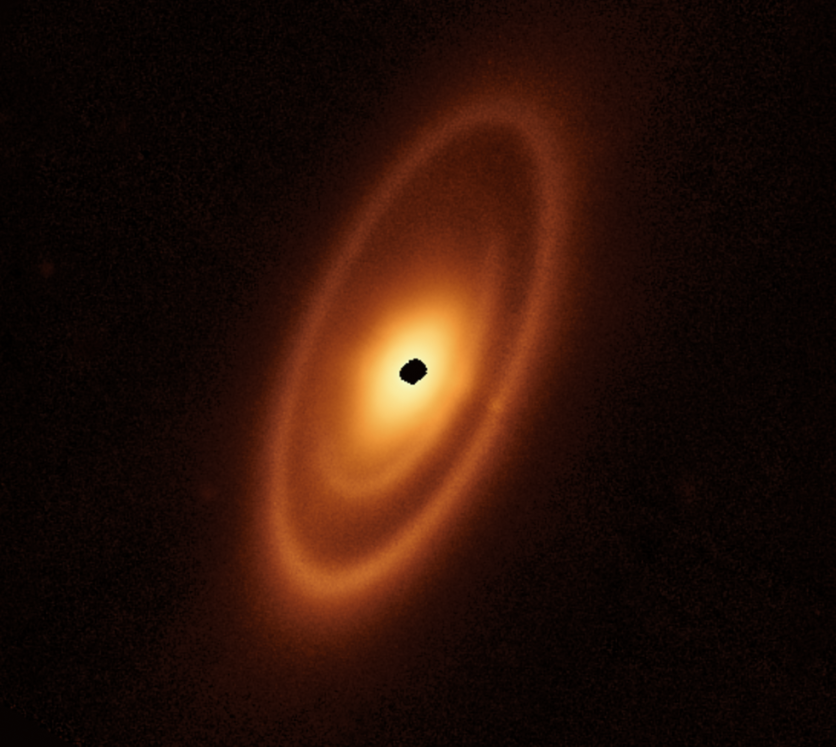The James Webb Space Telescope has captured the first asteroid belt ever seen outside our solar system. Astronomers used the telescope to snap the warm dust encircling a nearby young star, Fomalhaut, highlighting the structure and intricacy of the debris disks.
This discovery sheds light on the development and evolution of planetary systems, providing insights into how planets form and the conditions necessary for life.

Young Hot Star
The belts encircle Fomalhaut, a young hot star located in the southern constellation Piscis Austrinus, which can be viewed even with the naked eye.
The dusty belts, commonly known as 'debris disks,' consist of debris resulting from the collisions of larger bodies such as asteroids and comets. These disks are composed of three nested belts that stretch out to a distance of 14 billion miles (23 billion kilometers) from the star, which is approximately 150 times the distance between Earth and the Sun.
The belt farthest from the star has a scale approximately twice that of our solar system's Kuiper Belt, which is made up of small bodies and frigid dust located beyond Neptune. The inner belts, which had been a mystery until now, were uncovered by the Webb.
András Gáspár of the University of Arizona in Tucson and lead author of the study, said, "I would describe Fomalhaut as the archetype of debris disks found elsewhere in our galaxy because it has components similar to those we have in our planetary system."
"By looking at the patterns in these rings, we can actually start to make a little sketch of what a planetary system ought to look like - If we could actually take a deep enough picture to see the suspected planets."
Previously, the outermost belt has been imaged with great detail by the Hubble Space Telescope and Herschel Space Observatory, as well as the Atacama Large Millimeter/submillimeter Array (ALMA).
However, none of these telescopes detected any features within the belt. Thanks to Webb's infrared imaging capabilities, the inner belts have now been revealed for the first time.
A Result of Gravitational Forces
It is believed that the belts were formed as a result of gravitational forces exerted by unknown planets. Similarly, within our solar system, Jupiter regulates the asteroid belt, Neptune sculpts the inner edge of the Kuiper Belt, and the outer edge could be shaped by undiscovered objects beyond it, according to NASA.
The discovery of the asteroid belt outside our solar system is a significant milestone for astronomers.
The notion of a protoplanetary disk encircling a star dates back to the late 1700s when astronomers Immanuel Kant and Pierre-Simon Laplace came up with the hypothesis that the Sun and its planets emerged from a rotating cloud of gas that collapsed and flattened because of gravity.
Debris disks, on the other hand, appear at a later stage, after planets have formed and the original gas in the system has dissipated. These disks offer evidence that smaller bodies, such as asteroids, are colliding violently and breaking apart, producing enormous clouds of dust and other fragments.
The team's findings about this asteroid belt were published in the journal Nature Astronomy.

ⓒ 2026 TECHTIMES.com All rights reserved. Do not reproduce without permission.




